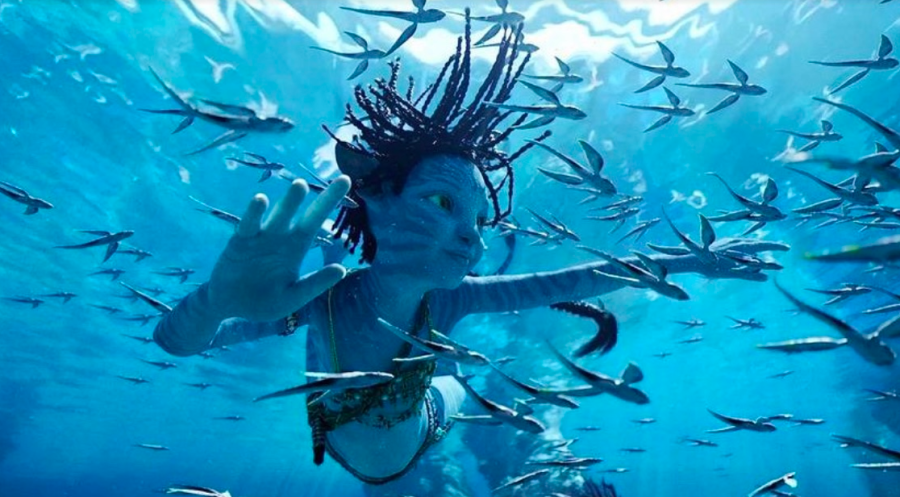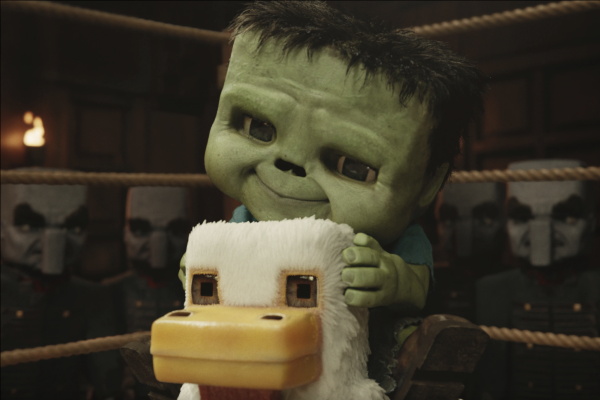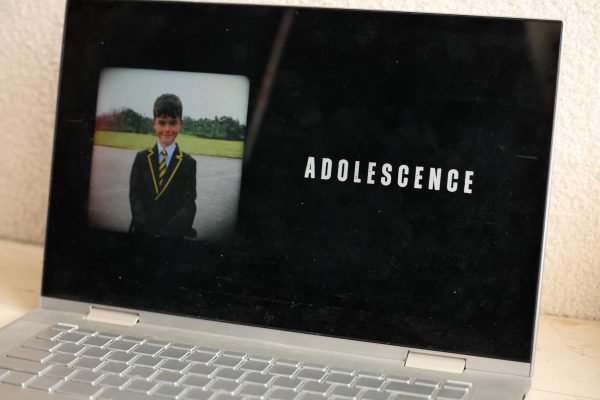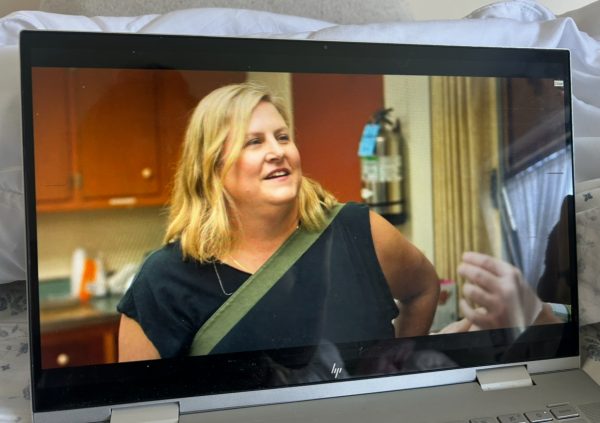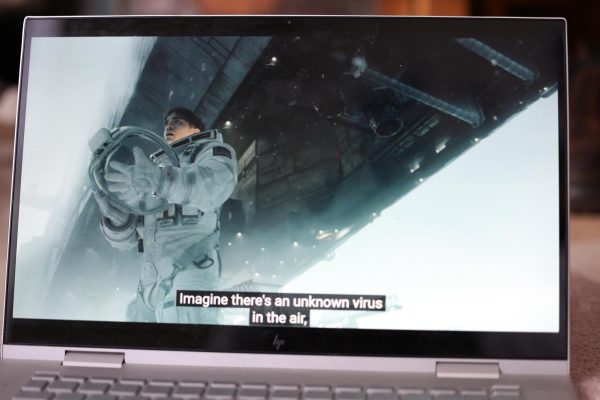“Avatar” Sequel Brings CGI To A Whole New Level
“Avatar: The Way of Water,” directed by James Cameron, was a genuinely awe-inspiring film. To put it plainly, it is a bigger and better version of 2009’s original “Avatar.” While there are plenty of areas that could have been improved, the overall movie was remarkable. Cameron brought new characters and plotlines into a visually beautiful film, using only the best to produce this estimated $250 million movie.
About 15 years after the events of the first film, we see Jake Sully (Sam Worthington) and Neytiri (Zoe Saldana) with their family. In a short recap, narrated by Jake, he explains how he’s learned the language and now has four kids, Neteyam (Jamie Flatters), Lo’ak (Britain Dalton) and Tuk (Trinity Bliss). Their fourth child, Kiri (Sigourney Weaver), was adopted from her mother Dr. Grace Augustine’s (Weaver) avatar after an inexplicable pregnancy.
The return of the “sky people” fractures the familial bliss shown during the opening flashback. Along with their sense of safety, Jake’s more carefree mindset fades and his reflexive Marine attitude replaces it. Some audience members saw him as too strict of a dad but, to me, he’s the embodiment of a military dad. The threat of war heightened his reserved behaviors.
The main antagonist, Colonel Miles Quaritch (Stephen Lang), is brought back from the dead through his avatar. During his first venture into Pandora’s forest, he captures three of Jake’s children and their friend Spider (Jack Champion). The Colonel’s return, and the Sully family’s subsequent near-death encounter with him, sparked the decision of the Sullys to leave the forest. The Sullys then learn the way of water once Tonowari (Cliff Curtis) and Ronal (Kate Winslet), the leaders of the Metakayina, accept them. This new setting allows Cameron to add multiple storylines to the mix, including developing Kiri’s connection to Eywa and creating a budding romance between Lo’ak and Tonowari and Ronal’s daughter, Tsireya (Bailey Bass).
While the Sullys adapt to their new home, Quaritch and his squad of avatars create a sharp image of colonialism by terrorizing the other Na’vi clans. The rest of the film makes it clear that to the Colonel, his assignment to kill Sully was not important solely because it was an order but because of Quaritch’s vendetta against Jake. The New York Times expanded on this idea, stating that “much of ‘The Way of Water’ is concerned less with large-scale imperial ambitions than with personal dramas of loyalty and betrayal.”
With a run time of three hours and twelve minutes, parts of the second Avatar movie missed the mark. The fight scenes were long, tired and repetitive, making the audience wish the film was shorter. The capture of the Sully kids was a plot point used too many times, and Tuk put our thoughts into words when she said, “I can’t believe I’m tied up again!”
Furthermore, there could have been better dialogue to fill the over three hours of screen time. Each character had a personality brought out by their language choices, but the script could have been elevated. Jake and Neytiri, in particular, could have had more dialogue to show their thoughts. Other than the dialogue with their children, Jake and Neytiri’s actions and body language was primarily how their thoughts were conveyed, thanks to the impressive acting of Worthington and Saldana.
While all the details above kept the “Avatar” sequel from being perfect, many elements made it a great film. One thing I have not seen mentioned in most articles is the acting done by the cast. Not only was this a larger ensemble cast, but much of the cast was young. For example, Trinity Bliss, who played Tuk, perfectly embodied an eight-year-old little sister. At the time of filming, Bliss was only about seven years old. Imagine having to picture the set in your mind rather than being physically surrounded by it. Personally, that’s something I can’t imagine doing, yet this cast was able to bring their characters to life flawlessly.
The missing set was created through computer imaging and is the most redeeming and extraordinary element of “The Way of Water.” Cameron outdid himself using High Rate Frame and other complicated CGI techniques. Every scene was seamless, and I felt pulled back to reality at no point by a visual mistake. The ocean, floating rocks and everything in between were supposed to feel real, and Cameron succeeded in that goal.
Overall, I enjoyed this movie a lot. The CGI was impressive and almost too realistic. Cameron created a new world inside Pandora, with relatable characters and struggles. “Avatar: The Way of Water” did have a longer run time than necessary, but the story centered around family made me want to see more from Cameron and the world of Pandora.



































































































































































































